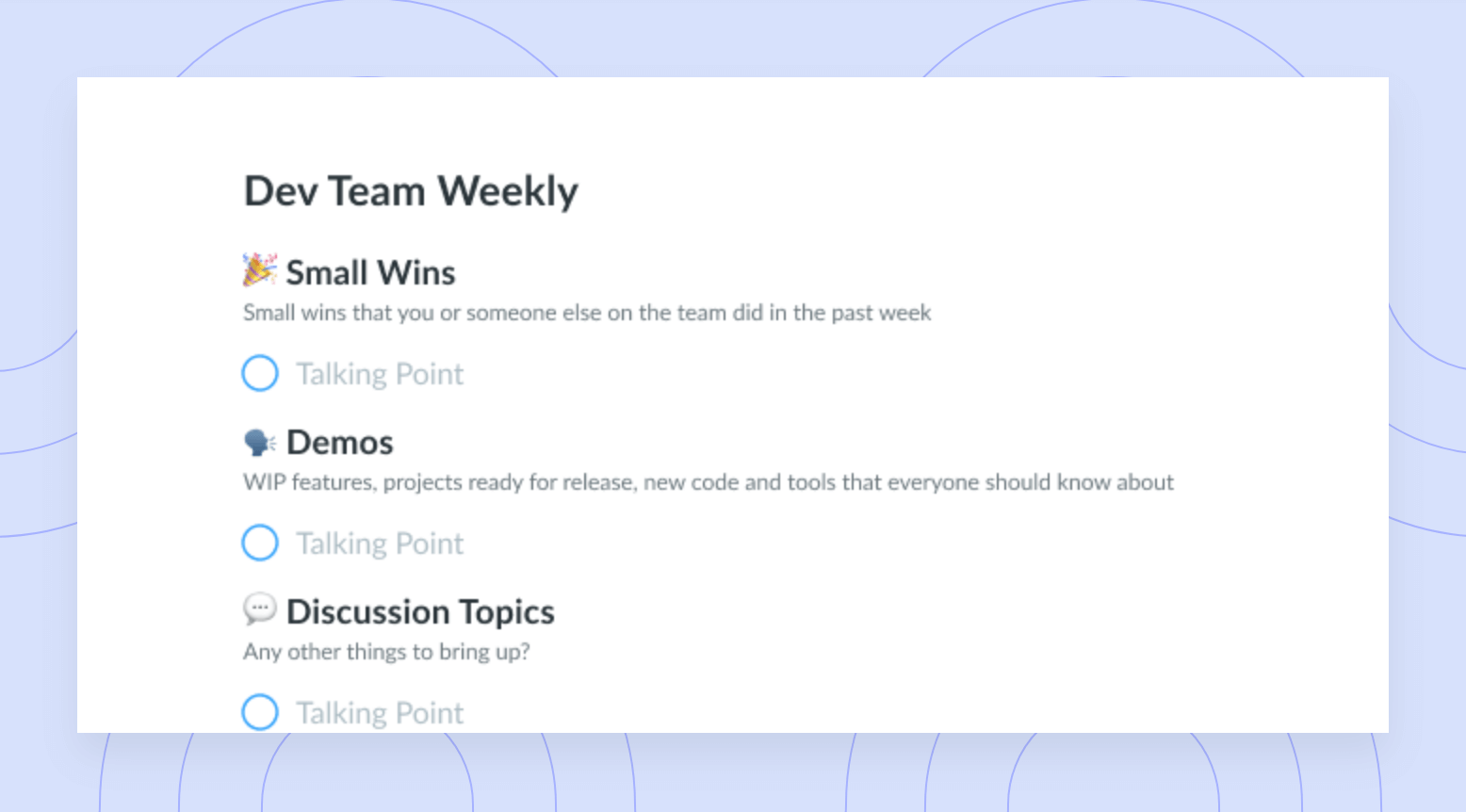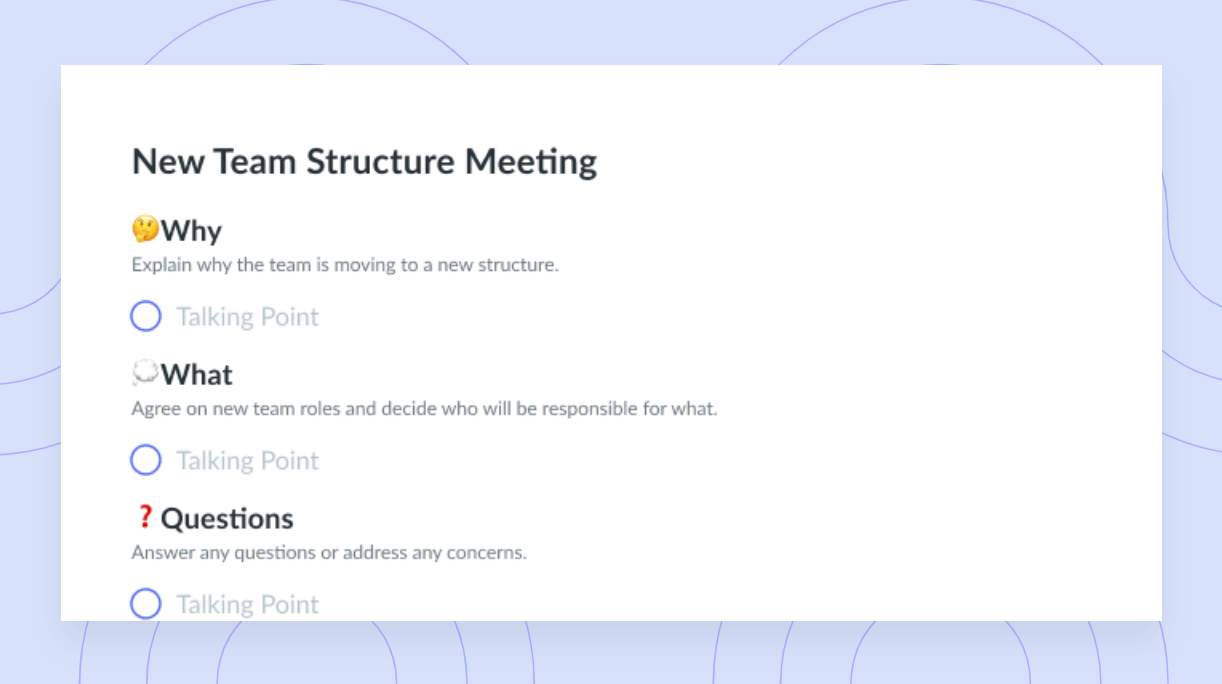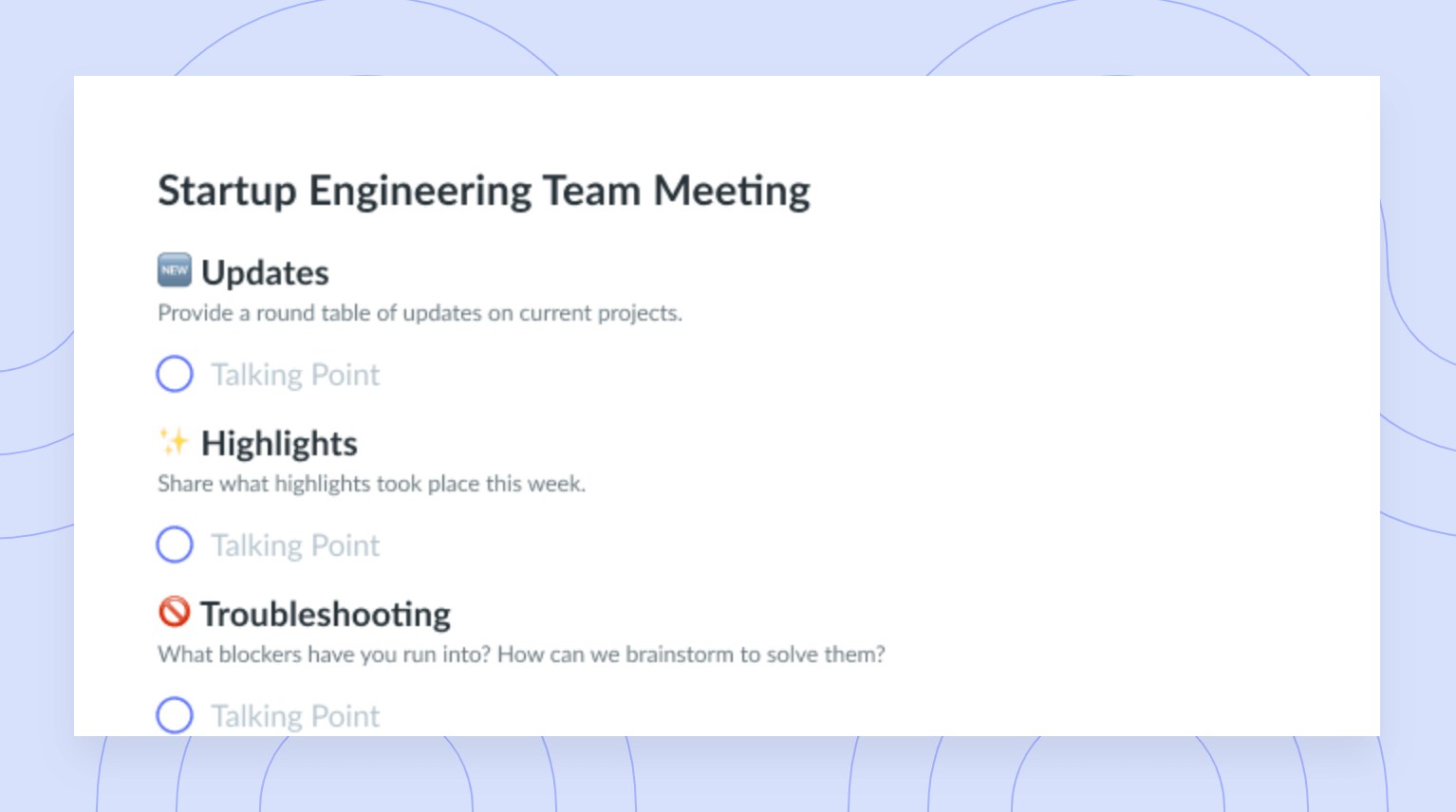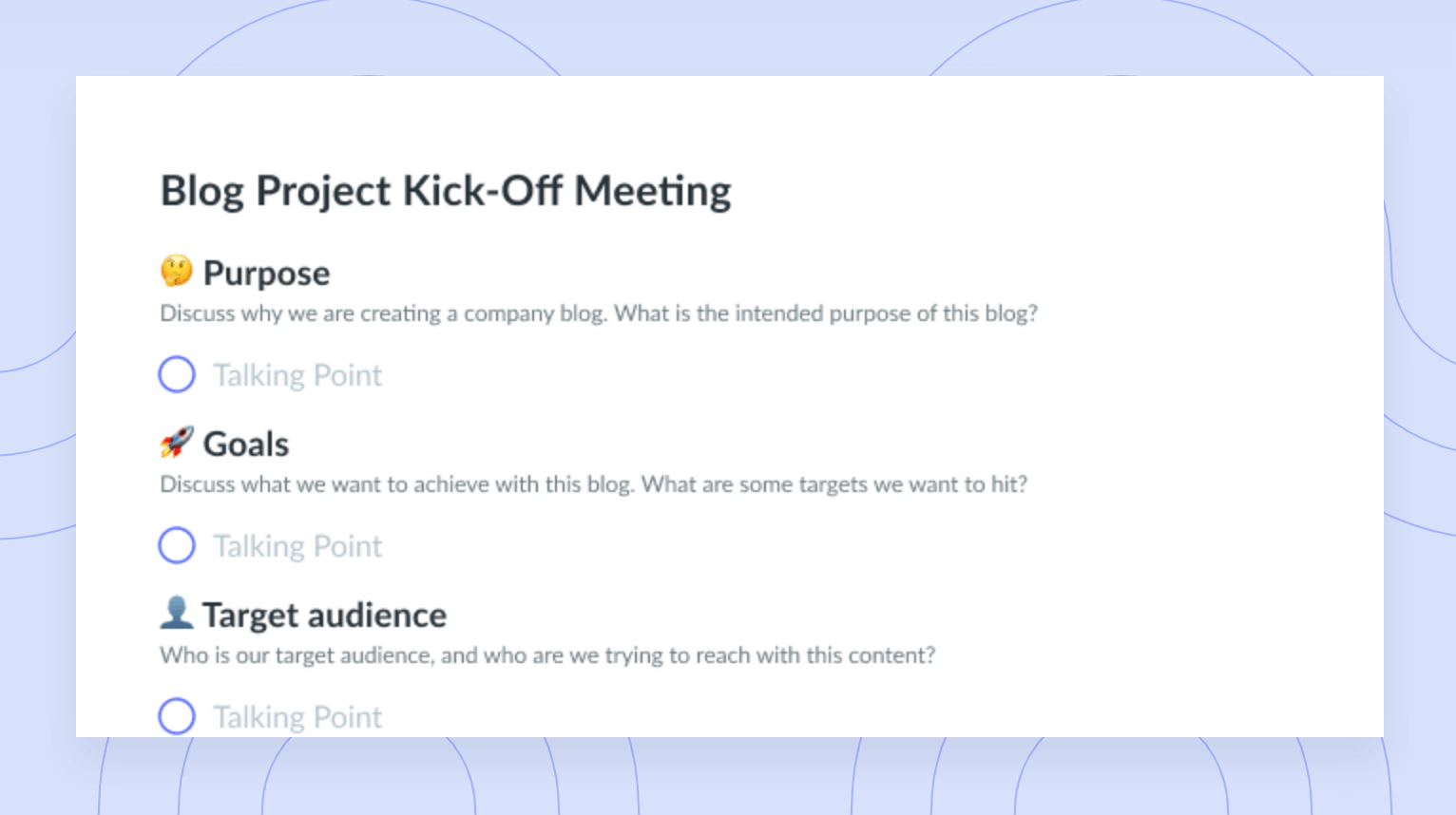How to Effectively Structure an Engineering Team
All successful engineering teams have one thing in common: a well-thought-out structure. Learn how to structure your team for long-term success.
We all know the saying: Teamwork makes the dream work.
And that’s especially true with engineering teams. For the dream to, well, work, an engineering team needs to be structured. Structuring your engineering team so all members have clearly defined roles, responsibilities, and goals will not only play to everyone’s strengths but will also create a positive working environment and set the organization up for success.
The best way to structure your software engineering department may vary, but if you need a good place to start, you’ve come to the right place. Fellow has you covered with everything you need to know to structure this team from start to finish.
- What is team structure in software engineering?
- The importance of engineering team structure
- What to do before changing the structure of your engineering team
- How to structure an engineering team
What is team structure in software engineering?
First, let’s break down the types of team structures you can choose from. Remember that some work best for larger teams, while others work better for smaller teams. You may also have a preference based on the industry in which you work.
The six-team structures to consider are:
- Hierarchical structure: Is organized in a pyramid with the leaders at the top, followed by directors, managers, then employees. The structure moves from the most senior to the least senior employees of the company.
- Circular structure: Places high-level team members in leadership positions within the circle, whereas lower-level employees are outside the circle in rings.
- Matrix structure: Organizes your team members into a grid, which sets individuals up to report to more than one leader. This option can improve the decision-making process and create more balance between leadership roles.
- Functional organizational structure: Groups employees with similar job functions and responsibilities together. Employees are organized by department, knowledge, and skills.
- Market-based structure: Divides people by industry, market, or customers. This is often the best structure for businesses offering services and products to specific market sectors.
- Process-based structure: Highlights different internal processes. This structure is best for teams that want to boost efficiency, need help with many different processes, and want to streamline organizational growth.

Build a culture of effective meetings with your engineering team
Level up your engineering meeting habits to boost engagement and productivity with a collaborative meeting agenda. Try a tool like Fellow!

The importance of engineering team structure
The more time and energy used to construct the engineering team the right way, the better everyone will be in their roles, and the more productive and efficient the team will be in the long run. A well-coordinated team in which teammates work in sync with one another is always a good investment. Here are four other reasons the structure of your engineering team is so important.
1 Improves communication
A well-thought-out team structure will give everyone a boost in communication. Having a strong sense of community on your team will lead to happier team members and brings everyone one step closer to accomplishing shared goals.
Great communication can also stop conflict from happening before it has a chance to become an issue while creating a sense of openness when sharing new ideas, thoughts, and opinions.
2 Fosters collaboration
Good team structure can also build collaboration. Team collaboration is all about several employees combining their knowledge and skills to solve a particular problem. Some managers think putting their developers in a room together will always lead to collaboration, but this isn’t the case. However, when employees within the department understand their roles in relation to those of their fellow team members, they’re able to work efficiently toward shared goals.
3 Enhances decision making
Team structure can also enhance the decision-making process. Similarly, a well-defined structure can also help eliminate bias that naturally occurs when making decisions. It ensures that everyone remains as objective and as considerate as possible when they make decisions that will affect others on the team
4 Increases efficiency
Finally, a team that is structured correctly will always be more efficient than teams that aren’t. Everyone will know the best way to work with one another, the strengths and weaknesses of every developer on the team, and what everyone is working on at any given time. Think of a well-structured team as a well-oiled machine running with immense efficiency!
What to do before changing the structure of your engineering team
Looking to change things up? Here are four things to do before putting your engineering team through a restructure.
- Communicate the goal of your changes
- Be transparent with every step of the changes
- Allow room for experimentation with your changes
- Ensure your changes benefit your audience
1 Communicate the goal of your changes
The last thing you want to do to your engineers is spring something on them without communicating the why. So, be sure to let them know the goal of the changes and what you’re looking to accomplish by putting the team through a restructure. Communicating the goals will help them understand the reasoning and will hopefully calm any nerves ahead of the changes.
2 Be transparent with every step of the changes
It’s likely the new structure won’t be complete in one fell swoop. When you go about the restructure in steps, be transparent as you go. Let them know when to expect the next step to take place and the details of how it will go down. The more information you can provide, the better.
3 Allow room for experimentation with your changes
It’s okay if you change things up and they don’t go exactly as planned. So, allow room for some experimentation as you make these changes. Maybe the structure you have in mind isn’t giving you the outcome you thought—and that’s okay. Let the team know what you thought would work, what didn’t, and explain that maybe something else would be better.
4 Ensure your changes benefit your audience
It’s important to emphasize to your team that the changes are rolling out in the hopes that everyone benefits and that there’s a greater likelihood for an increase in productivity and long-term success. Additionally, let them know the benefits you’re striving for and how you’re hoping the general workflow of the team will improve.
How to structure an engineering team
Ready to start structuring your engineering team? Here’s how to do it right, the first time.
- Consider your growth and scalability
- Set clear project goals
- Evaluate your current team members’ skills
- Create a detailed plan for your
- Set clear responsibilities
- Monitor the success of the new structure and modify it as needed
1 Consider your growth and scalability
First, take note as to how the team will grow and scale in the future. Additionally, consider how the organization will grow and scale, too. If your engineering team is on the small side now, but you plan on hiring more leads, managers, and developers in the future, map out how the structure will look when this happens.
When you factor in how you plan to grow and scale, you won’t have to restructure once all open roles are filled.
2 Set clear project goals
Next, consider your project goals. Depending on the industry, project goals vary, but understanding what your team needs to accomplish this month, this quarter, and this year can help you develop a team that can achieve these goals and then some.
Having these expectations in place is a great start—then take it one step further by setting and tracking goals in Fellow. This way, there are no surprises regarding deadlines, bandwidth, and which team member is working on which project.

3 Evaluate your current team members’ skills
Every engineer on your team has a unique set of strengths, weaknesses, and skills. Knowing the specialty of each team member helps you to understand where they may need some support and where they excel working independently. This can also help you determine who is best suited to working in a group and who thrives working on their own.
There’s no right and wrong, but you always want to structure a team around the skills you already have in your wheelhouse.
There’s no right and wrong, but you always want to structure a team around the skills you already have in your wheelhouse.
4 Create a detailed plan for your team structure
Once you have the core details in place, create a plan that outlines the organization of the team. The plan should showcase how the structure will play a part in the success of projects and the company’s success. When you outline the intent behind how you’ve structured your team, it helps you to think critically and ensure nothing has fallen through the cracks.
The detailed plan can also be helpful if an executive asks questions regarding the structure and why you went in the direction you did. It’s always good to have this information handy.
5 Set clear responsibilities
Part of creating a structure from the ground up is setting clear responsibilities for every team member. Doing so answers the question of “what is this person working on?” and creates transparency and accountability among the engineers.
Additionally, when each engineer knows what their team is working on, they can offer assistance if a deadline looks like it might be missed, potentially share a new idea or two, or be more prepared to help solve a bottleneck.
6 Monitor the success of the new structure and modify it as needed
Once the structure is successfully implemented, monitor how it’s working and switch things up if necessary. What may be deemed a success over the first few months may start to unravel when new projects are introduced, or when new employees join the team.
Don’t be afraid to go back to the drawing board and shuffle things around. A simple modification to the team’s structure can quickly put things back on track.
Everyone likes a little structure
As you go about effectively structuring your engineering team, there are a lot of elements, work personalities, and long-term goals to consider. Remember, what may work for an engineering team in one organization may not work for another. But once you find a structure that everyone can excel in, stick to it! Don’t fix something that isn’t broken.






![Strategy vs. Tactic—Everything You Need to Know [+ Examples]](https://fellow.app/wp-content/uploads/2022/06/Strategy-vs.-Tactics.jpg)






![Weekly Project Check-In Meeting [Engineer Manager] Template](https://fellow.app/wp-content/uploads/2021/10/1-on-1-Accomplishments-Meeting-preview.png)














